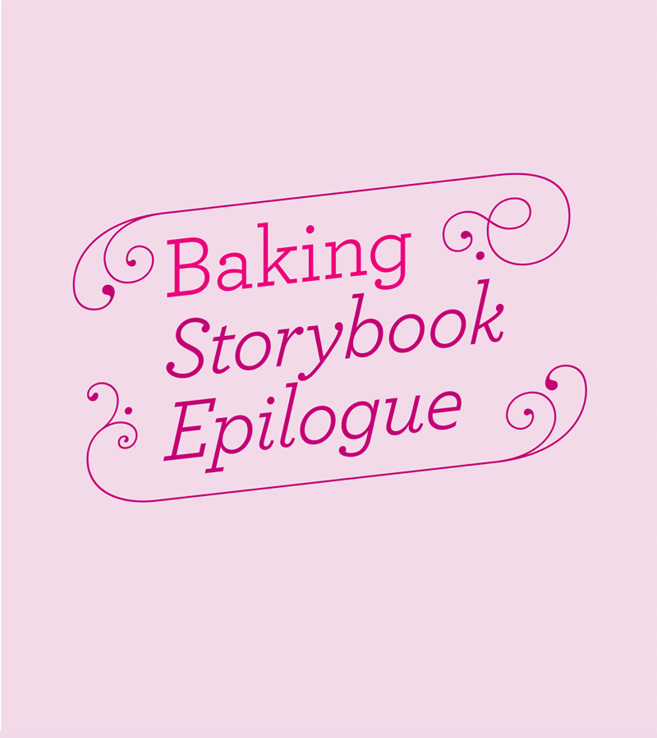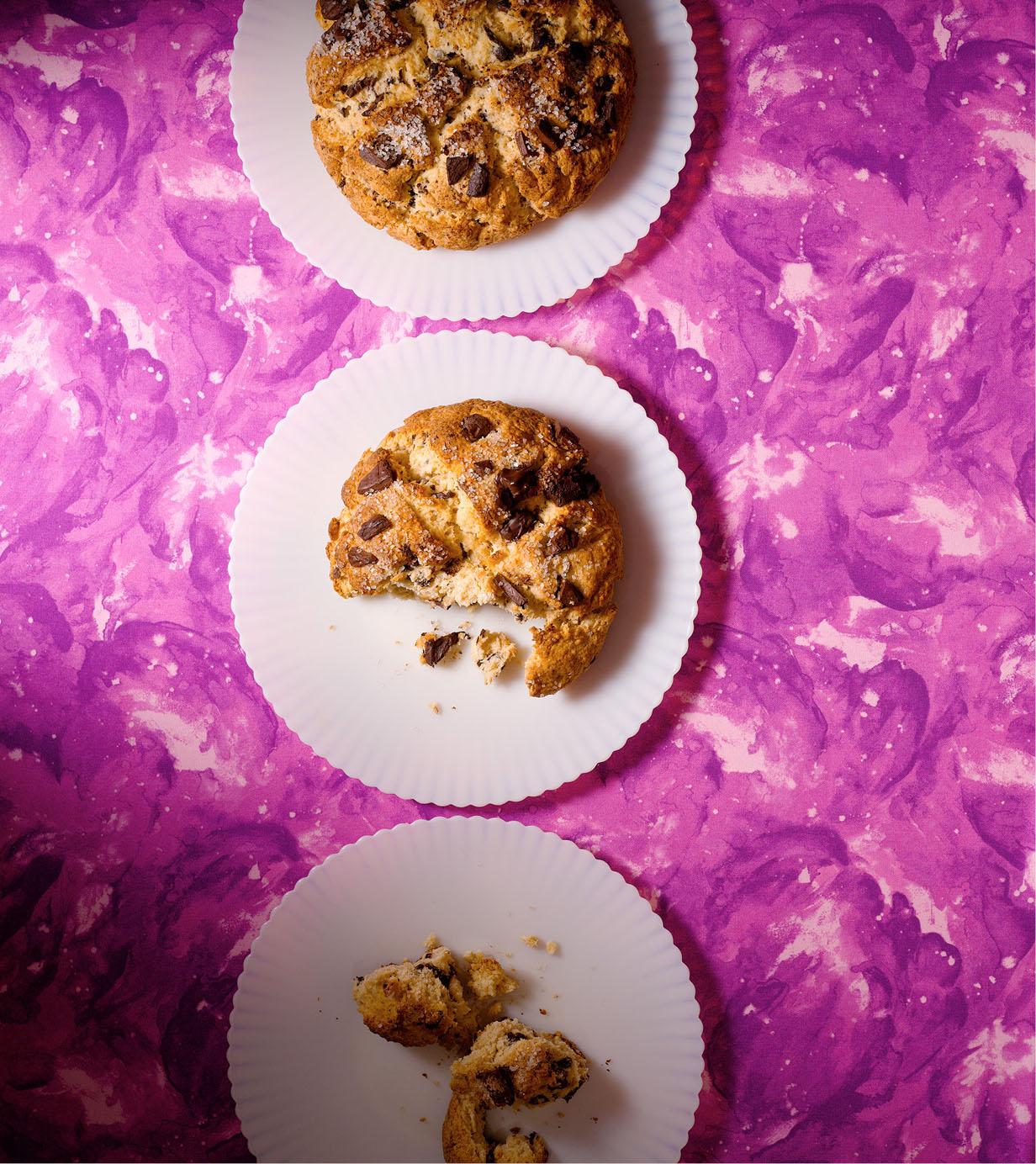
every last crumb
I unearthed my long-forgotten recipe for homemade crackers. Starters, in all strengths of sour and in varying degrees of quantity, are nurtured only to take over an entire refrigerator shelf or countertop, depending on which day what sludgy, pasty, or sticky mass demands my attention. The innards of a lonely clump of country bread are turned into a tasty bread salad. Chewy rectangles of packed-with-energy bars loaded with organic dried fruits, nuts, seeds in a range of complexions, and sweeteners formerly unknown to the mainstream supermarket shelf, continue to be lifted tidily from a nine-inch baking pan.
A large, slightly stale hunk of my newest iteration of pain de mie has been chunked up, soaked, and layered in a suave coconut custard mixture and baked. A gorgeous block of rich white cornbread was resuscitated into a grand stuffing for Cornish hens. And then there was the morning that I whipped up four varieties of cookie dough, lovingly formed them into paper-wrapped logs, tied the ends with twine, lined a freezer shelf with the largess, and sat back to admire my diligence and foresight.
Let me tell you what has been happening in the kitchen over the last few years: I have morphed into my own resource for whatever baked sweet or savory my needs require.
Depending on having everything—and I do mean everything—homemade is my new religion. Let me refine that: entirely homemade. And refine that further: faith is what you really need here in order to keep up this strategy. Even for someone who is entirely passionate about baking and the baking process (that is me!), the very notion of “entirely homemade” had turned into an ongoing test of sorts. Since reliability does have its slippery side, occasional backslides of adherence have occurred over time.
My attempt, based on the urge for self-sufficiency for every last crumb emanating from my kitchen and my kitchen alone, has me baking wildly in all directions—tender breakfast breads, crusty dinner breads (and, with a good quick turn of a serrated knife, croûtes and croûtons), teatime cookies, biscotti and shortbread for the coffee break and as take-along sustenance for car trips, chewy-crispy-crunchy granolalike sweetmeats, and so much more. Need a snack? No problem. There is a tin of something already baked lurking somewhere on two if not three floors of my home. Blocks of fudgy brownies lounge in the freezer next to swirls of pastry created from a dough that takes—on and off—three days to complete. At any given time, I may have a minimum of, say, three to five kinds of dinner rolls, one or two coffee cakes, unbaked spirals of cream cheese–centered dough expecting to be assembled on a baking sheet to—presto!—become rugelach, a date-nut bread waiting to be sliced, or a parade of sticky buns, in addition to random toppings and sauces. My freezer is a riot of stage-ready things.
The perilous conditions of a damaging ice storm many years ago that turned most of the streets in Washington, D.C., into a premier citywide ice skating rink tested my resourcefulness, as seven guests were a day away from congregating around my dining room table for a casual supper. You couldn’t drive to a store for a loaf of bread, and even walking was touch and go. The hungry eaters were coming anyway and, to this day, I can’t figure out how they made it safely, as the streets were lined with what seemed like one continuous carpet of packed snow overlaid with ice. Luckily, all of the provisions for dinner were in-house, except for the bread, so I decided to put together an overnight dough for a rambling, savory cheese bread to rip apart and serve with the main course. The next day, as I pressed out the dough onto a big baking sheet while the lamb shanks and white beans were bubbling slowly on a back burner, I realized that my inability to buy bread a few blocks away at a neighborhood bakery had upended my usual can-do attitude. The scenario was unnerving, but it did teach me that I could depend on my own initiative.
Yet the path to baking self-sustainability is not without its rough patches—the bad, messy ones.
If you are on the outside peering in, my catalog of mishaps reads like a kitchen comedy of sorts. However, if you are the one trying to manage a new, self-imposed infrastructure of all-homemade-all-the-time, there is that moment in time when it seems more appealing to run out, cash tucked into a pocket, for the nearest boule. Here is a recount of several episodes that stand out, testing the patience of mind, body and, might I add, my cleanup skills:
Episode A: I stored a batch of soupy pre-ferment (the basis for several holey and crusty flatbreads) in what seemed like a roomy container. The active mixture broke through the lid and danced out onto the refrigerator shelf, worked its way between the frame of the door and the rubber seal that usually secures the door, and forced the unit open by about 1 inch. The goo puddled in a nice pattern on the floor. The exuberance of the mixture—and it was a randy one—exceeded my expectations. But not in a good way. Postscript: I was away for eight hours when this event occurred. (Ugh.)
Episode B: The most expensive loaves of bread I ever “purchased,” about $500-worth, were “bought” during the weekend I cranked up the oven to 500 degrees F during a summer heat wave to bake several breads for a picnic. The air-conditioning promptly failed and I lingered in my own sauna for a dreadful day until the unit was repaired. The bread was delicious, but not $500-delicious.
Episode C: In the Midnight-Baking-Can-Be-Fun department, let me recount for you the time that I miscalculated the bake-off schedule for a previously refrigerated dough. Four dozen butter rolls of some delicacy were timed to be loaded into the oven for a bake at the agreeable hour of 12:00 noon. Wrong. Make that 1:30 a.m. A mathematical error thus created my longest babysitting session ever on record. (It even exceeded the leisurely wait for a multigrain dough destined to be sandwich bread; eventually, I gave up and made rolls out of the massive glob that would have been a well-constructed loaf—if patience had allowed—and so trimmed the waiting time by five hours, or more.)
The rhythm of baking, flowing from one philosophically serendipitous moment to another, does have its charm—if you take the long view, with a certain relaxed mentality (which I am still attempting to accomplish). The “Look, Ma, I Made Everything Dinner Party (or Brunch, or Lunch, or Tea)” perspective captivates friends who now expect the whole deal to come from my girl-powered hands. This is now my lot and it is always rewarding, if not occasionally challenging. I hope that I can keep it up. I’d tell you more, but I have to put this bittersweet chocolate tea bread into the oven.
a snazzy bittersweet chocolate tea bread

serving: one tea bread, creating about 10 slices
ahead: best on baking day
vanilla and chocolate chunk dough
2 cups unsifted all-purpose flour
23/4 teaspoons baking powder
1/4 teaspoon salt
3 tablespoons granulated sugar
6 tablespoons (3/4 stick) cold unsalted butter, cut into tablespoon-size chunks
2/3 cup heavy cream
1 large egg
2 teaspoons vanilla extract
7 ounces bittersweet chocolate (in the cacao range of 60% to 70%), chopped into small nuggets
about 2 tablespoons sparkling sugar, for sprinkling on the unbaked round of dough
Preheat the oven to 375 degrees F.
Line a heavy rimmed sheet pan or cookie sheet with a length of ovenproof parchment paper. (The baking pan must be heavy or the bottom of the bread will darken considerably before the interior is entirely baked.)
For the dough, sift the flour, baking powder, salt, and granulated sugar into a medium-size mixing bowl. Drop in the chunks of butter and, using a pastry blender or two round-bladed table knives, cut the fat into the flour mixture until reduced to small bits.
In a small mixing bowl, whisk the heavy cream, egg, and vanilla extract.
Pour the heavy cream–egg-vanilla extract mixture over the flour mixture, sprinkle over the chopped chocolate, and stir to form a crumbly dough, using a wooden spoon or flat wooden paddle. With your fingertips, bring the mixture together until a cohesive dough is formed. The mixing and forming of the dough should not take longer than about 1 minute. Note that the dough is mixed only to shape and form, as light kneading frequently results in a dense-textured crumb.
Transfer the dough to a lightly floured work surface and form into a well-domed ball measuring about 5 inches in diameter, keeping the dough ball as plump as possible. Place the dough ball in the center of the baking pan. With a small sharp knife, cut a cross on the surface of the bread (about 1/4 inch deep). Sprinkle the sparkling sugar over the surface of the bread.
Bake the bread in the preheated oven for 40 minutes, or until set and golden. Let the bread stand on the baking pan for 2 minutes, then remove to a cooling rack, using two wide offset metal spatulas. Serve at room temperature.
notes
• the amount of heavy cream needed to bring the dough together depends on the density of the cream (thicker is better), the absorption quality of the flour, and the atmospheric conditions of the day; you can safely add 1 to 2 tablespoons heavy cream in order to create a cohesive dough, but realize that a too-slack dough may bake out of shape—in other words, aim for a dough ball that holds its shape, but is not too moist (if you are unsure, begin with 1/2 cup and go from there), keeping in mind, however, that the overall moistness of the dough contributes to the bread’s rich, silky quality and enticing crumb.
• use a finely serrated knife to cut the bread

a snazzy bittersweet chocolate tea bread
